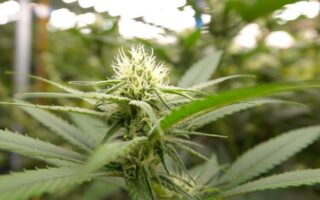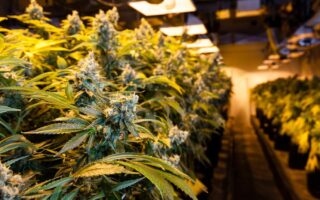Is Pot a Narcotic? Unraveling the Green Enigma
In a world where cannabis has emerged from the shadows of prohibition into the spotlight of legal acceptance and medical use, the classification of this plant remains a topic of heated debate. Is marijuana a narcotic, or does it deserve a distinction that mirrors its complex chemical makeup and diverse societal roles? As we delve into the nuances of this age-old question, we will explore the definition of narcotics, the pharmacological properties of cannabis, and the cultural contexts that shape our perceptions. Join us on a journey through science and society to uncover the truth behind marijuana’s multifaceted identity and its place within the conversation on drugs and their classification.
Table of Contents
- Understanding the Definition of Narcotics and Their Classification
- Exploring the Chemical Composition of Cannabis and Its Effects
- Analyzing Public Perception and Misconceptions About Marijuana
- Recommendations for Responsible Use and Policy Considerations
- Q&A
- Future Outlook
Understanding the Definition of Narcotics and Their Classification
Narcotics are substances that change the way pain is perceived by the brain and are often associated with their ability to induce feelings of euphoria or relaxation. Traditionally, this term has encompassed a broad range of drugs, including both naturally occurring substances, such as opiates derived from poppies, and synthetic derivatives. They are classified into several categories based on their effects, potential for addiction, and legal status. The primary classifications include:
- Natural Narcotics: Derived from plants, like morphine and codeine.
- Semi-synthetic Narcotics: Modified versions of natural narcotics, such as heroin.
- Synthetic Narcotics: Man-made drugs designed to mimic natural narcotics, like fentanyl.
- Non-narcotic Analgesics: Pain relievers that do not fall under narcotic classification, such as acetaminophen.
Under this classification, the term narcotic often carries a legal connotation that varies by jurisdiction. While narcotics are primarily associated with opioid medications, the inclusion of other substances has led to debates about what constitutes a “narcotic.” Understanding these definitions is crucial for navigating both legal frameworks and public health discussions. For example, while cannabis is not classified as a narcotic in many regions, its psychoactive properties have put it at the forefront of the discussions about pain management and recreational use, raising questions about its status:
| Substance | Classification | Common Uses |
|---|---|---|
| Opioids (e.g., morphine) | Narcotic | Pain management |
| Heroin | Narcotic | Recreational use |
| Cannabis | Non-narcotic | Medical/recreational use |
Exploring the Chemical Composition of Cannabis and Its Effects
Cannabis is a complex plant containing over 400 chemical compounds, of which more than 100 are classified as cannabinoids. The most well-known cannabinoids are tetrahydrocannabinol (THC) and cannabidiol (CBD), both of which interact with the body’s endocannabinoid system, leading to various physiological effects. While THC is renowned for its psychoactive properties, producing the “high” often associated with cannabis, CBD does not have the same intoxicating effects and is often praised for its potential therapeutic benefits. This intricate blend of cannabinoids, terpenes, and flavonoids contributes to the overall experience and efficacy of cannabis, influencing everything from pain relief to mood enhancement.
Beyond cannabinoids, the terpenes found in cannabis, such as myrcene, limonene, and caryophyllene, also play a significant role in the plant’s effects. These aromatic compounds impact the plant’s scent and flavor and contribute to the so-called entourage effect, where the synergistic interaction between cannabinoids and terpenes enhances the overall therapeutic outcomes. As the conversation around cannabis evolves, understanding the interplay of these components can help demystify the plant’s classifications and effects, allowing for a more nuanced discussion on its therapeutic potential and whether it can be designated a narcotic or not.
Analyzing Public Perception and Misconceptions About Marijuana
Public perception of marijuana is shaped by a complex mix of historical context, cultural views, and legal definitions. Many individuals still associate marijuana with narcotics, primarily due to its classification alongside more potent drugs. This association often stems from decades of anti-drug campaigns that painted cannabis in a negative light, perpetuating the idea that it is synonymous with addiction and criminal behavior. Despite a growing body of research suggesting its medicinal benefits and lower potential for addiction, a significant portion of society remains skeptical, clinging to misconceptions that have been ingrained over generations.
Understanding that marijuana functions differently from traditional narcotics is crucial in changing public perception. Here are some common misconceptions that contribute to the confusion:
- Marijuana is as addictive as opioids.
- All strains of marijuana lead to the same effects.
- Using marijuana means users are at risk of losing control.
| Misconception | Truth |
|---|---|
| All marijuana is harmful. | Medical marijuana can alleviate various conditions. |
| It leads to harder drug use. | Most users do not transition to more dangerous substances. |
| Legalization increases overall drug use. | Studies show that legalization often stabilizes or reduces use. |
Recommendations for Responsible Use and Policy Considerations
As the discourse surrounding the classification of cannabis continues to evolve, it is imperative for individuals and lawmakers alike to approach its use with a sense of responsibility and caution. To promote informed decisions, consider the following recommendations:
- Education: Engage in educational programs that clarify the effects and potential risks of cannabis consumption.
- Responsible Consumption: Encourage moderation, especially among new users, to mitigate adverse effects.
- Awareness of Legal Context: Stay informed about local laws and regulations governing cannabis use to avoid legal repercussions.
Policymakers should prioritize considerations that support public health and safety as cannabis legalization becomes increasingly prevalent. Critical areas for policy focus include:
- Research Funding: Allocate resources for studies that explore the long-term effects of cannabis, particularly concerning its classification and potential therapeutic uses.
- Public Health Campaigns: Develop initiatives that educate the public on safe usage and associated risks.
- Access to Treatment: Ensure that support services are available for individuals who may experience dependency issues or adverse reactions.
Q&A
Q&A: Is Pot a Narcotic? Unpacking the Myths and Facts
Q1: What exactly is a narcotic?
A1: A narcotic traditionally refers to substances that dull the senses, relieve pain, and induce sleep. The term originally applied to opiates like morphine and codeine, which come from the opium poppy. Over time, the definition has expanded in colloquial use to include various drugs and psychoactive substances, sometimes inaccurately.
Q2: Where does marijuana stand in this classification?
A2: Marijuana, or pot, is primarily known for its psychoactive element, THC (tetrahydrocannabinol), which alters mood and perception. While it does have sedative effects for some users, it doesn’t fit neatly into the classic definition of a narcotic, particularly since it does not induce the same level of physical dependence or respiratory depression associated with traditional narcotics.
Q3: Are there any legal definitions that classify marijuana as a narcotic?
A3: Legally, the classification of marijuana varies by jurisdiction. In the United States, for example, the Controlled Substances Act lists it as a Schedule I substance, which denotes a high potential for abuse and no accepted medical use. However, many states have legalized marijuana for medical or recreational use, leading to growing discussions about its legal categorization.
Q4: If pot isn’t a narcotic, how do we categorize it?
A4: Marijuana is often classified as a cannabinoid, which refers to compounds found in the cannabis plant. These compounds interact with the body’s endocannabinoid system, producing a wide range of effects that differ from those typically associated with narcotics.
Q5: Can using marijuana lead to dependency or other health issues?
A5: While not as physically addictive as narcotics, some individuals can develop a psychological dependence on marijuana. The World Health Organization has acknowledged that regular use can lead to decreased motivation, mental health issues, and other complications for some users, especially when used at high doses or in adolescence.
Q6: What do experts say about the medicinal use of marijuana?
A6: Medical professionals often point to marijuana’s potential benefits, such as pain relief, reduction in inflammation, and alleviation of anxiety. Studies indicate that, when used appropriately, it can serve as an alternative to traditional narcotics for specific conditions, such as chronic pain or certain neurological disorders.
Q7: should we consider pot a narcotic?
A7: The consensus seems to be that while marijuana can produce some sedative effects similar to those of narcotics, it is distinct in its composition, effects, and potential for dependency. The debate continues as we explore the complexities of cannabis and its diverse effects on health and society.
Whether viewed through the lens of legality, science, or personal experience, the classification of marijuana remains a fascinating topic that invites ongoing discussion and research.
Future Outlook
As we draw the curtain on our exploration of cannabis and its classification, it’s evident that the conversation surrounding whether pot qualifies as a narcotic is anything but straightforward. Definitions shift with cultural perceptions and scientific discoveries, weaving a complex tapestry of legal, medical, and social implications. Ultimately, the answer may lie not solely in terminology, but in our broader understanding of cannabis itself—its properties, its uses, and its impact on society. As legislation evolves and research expands, the discourse will continue, encouraging us to engage thoughtfully with this multifaceted topic. Whether seen through the lens of science, law, or personal experience, the nature of cannabis remains a nuanced narrative, inviting us to ponder its role in the world today. Perhaps, in asking whether pot is a narcotic, we are merely scratching the surface of a much larger story—one that invites ongoing dialogue and discovery.


